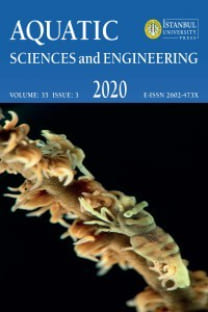Behavior and Stereotypies of Nile Tilapia (Oreochromis niloticus) in Response to Experimental Infection with Aeromonas hydrophila
Behavior and Stereotypies of Nile Tilapia (Oreochromis niloticus) in Response to Experimental Infection with Aeromonas hydrophila
DOI: 10.26650/ASE2018407191Motile Aeromonas septicemia (MAS) is a common bacterial fish disease that may cause severe economic losses. This novel study was conducted to investigate behavioral changes of Nile tilapia (Oreochromis niloticus) in response to experimental induction of MAS. Aeromonas hydrophila, which is the causative agent of MAS, was isolated from diseased O. niloticus and used for the experimental infection of O. niloticus by intraperitoneal and intramuscular injections for inducing MAS. Each injection route had its control group. Fish behavior was recorded daily using a digital video camera for 7 consecutive days post injection in intraperitoneally and intramuscularly injected fish. On day 14 post injection, the behavior of intramuscularly injected fish was recorded again. Experimentally infected O. niloticus showed various clinical signs such as exophthalmia, ocular hemorrhage, congested gills, and skin and fin hemorrhages. The behavior of apparently healthy and experimentally infected O. niloticus was recorded and analyzed by scan observation. The experimentally infected fish exhibited cessation of normal behavior. Buccal-opercular movement and signs of aggression increased, whereas foraging, schooling, and shoaling frequencies decreased. Two abnormal behavioral patterns (stereotypies) of apparently healthy O. niloticus following injections were recorded. Post injection, intraperitoneally injected fish performed circular swimming on day 3 and 7, whereas intramuscularly injected fish exhibited vertical movement on the days 4, 5, 7, and 14. The frequency of circular swimming increased over time; however, vertical swimming frequency decreased by day 14. These results revealed that MAS had a severe effect on the behaviors of apparently healthy fish. Therefore, monitoring the behavior of O. niloticus may provide a useful and noninvasive tool for assessing fish health and diagnosing MAS early.
___
- Martins,C.I., Galhardo, L., Noble, C., Damsgård, B., Spedicato, M.T. Zupa, W. & Kristiansen, T. (2012). Behavioural indicators of welfare in farmed fish. Fish physiology and biochemistry journal, 38(1), 17-41. DOI: 10.1007/s10695-011-9518-8Almaza´n-Rueda P,
